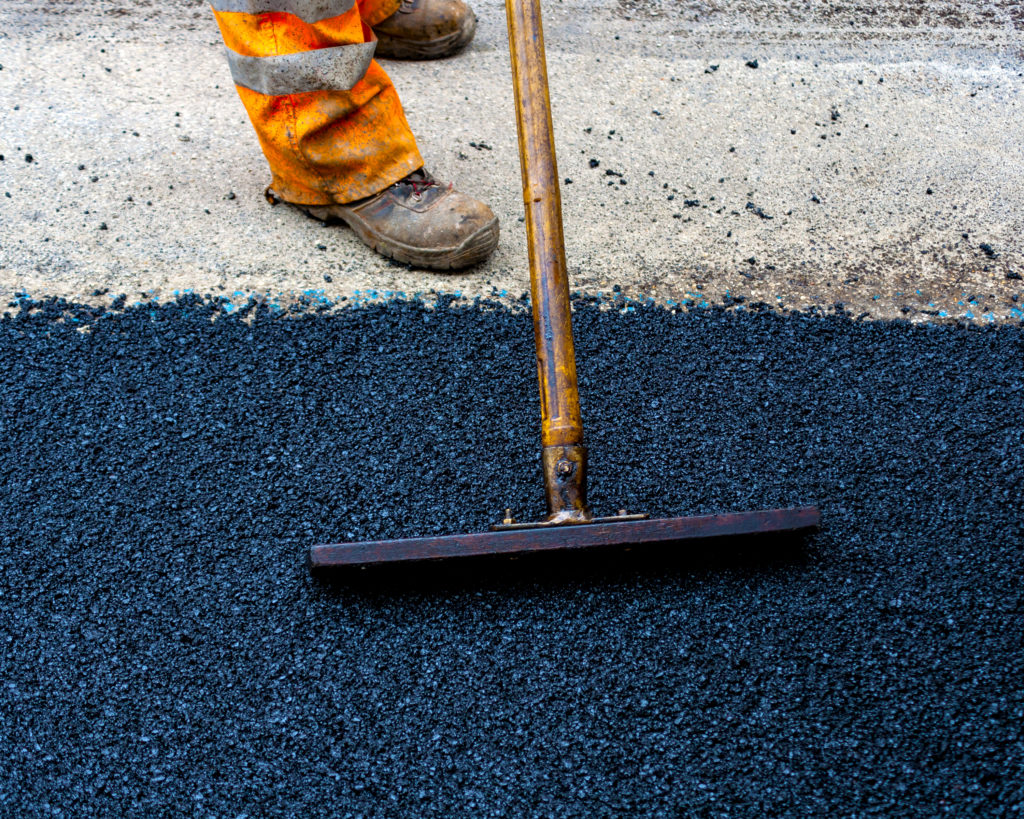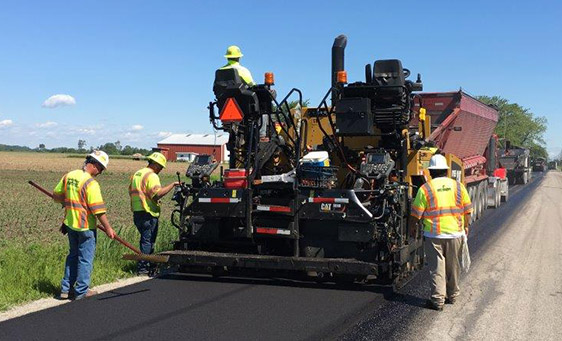Reimagine Your Room: Hot Mix Asphalt Paving for Angled Parking Lot Jobs
Reimagine Your Room: Hot Mix Asphalt Paving for Angled Parking Lot Jobs
Blog Article
Unlocking the Keys of Hot Mix Asphalt Modern Technology
Checking out the depths of warm mix asphalt modern technology uncovers a globe where careful processes and precise formulations assemble to shape our roadways and infrastructure. The fusion of fillers, binders, and aggregates isn't merely a building and construction task yet a strategic orchestration of resilience and effectiveness. As we peer into the detailed dance of components, a tapestry of durability and sustainability unfolds. However what lies below this surface area of asphaltic mastery, and what tricks wait to be revealed in the realm of paving innovations?
Value of Warm Mix Asphalt
Hot Mix Asphalt plays a critical role in modern infrastructure development due to its durability and cost-effectiveness. As the most frequently used paving product for roadways, freeways, and car parking whole lots, Hot Mix Asphalt supplies a range of advantages that contribute to its importance in building and construction jobs.
The longevity of Hot Mix Asphalt stems from its composition, that includes accumulations, binder, and filler products that are very carefully selected and mixed to satisfy details performance requirements. This specific mix results in a versatile and solid sidewalk that can sustain regular usage without substantial damage. Warm Mix Asphalt is 100% recyclable, further improving its sustainability and ecological advantages. Generally, the value of Hot Mix Asphalt in facilities development can not be downplayed, as it remains to be a foundation of contemporary building and construction practices.
Components of Asphalt Mixes
The make-up of asphalt mixes consists of thoroughly selected accumulations, binder, and filler products that are important for accomplishing certain efficiency requirements. Aggregates are the primary component of asphalt blends, offering strength and security. The binder, normally asphalt or asphalt concrete, holds the aggregates together and supplies adaptability and toughness to the mix.
The mix and proportion of these elements play a significant duty in figuring out the quality and efficiency of the asphalt mix. Designers carefully create the mix to fulfill certain demands, thinking about elements like traffic quantity, climate conditions, and pavement life expectancy. Appropriate selection and balancing of accumulations, binder, and fillers are essential for developing sturdy, durable asphalt pavements.
Combining and Manufacturing Techniques

As soon as the aggregates are chosen, the binder, often asphalt concrete, is included in bind the products together. The binder's quality and quantity significantly impact the mix's resistance, adaptability, and toughness to environmental factors. Additionally, fillers like hydrated lime or Rose city concrete might be integrated to improve particular features of the asphalt mix, such as its workability or wetness resistance.
Throughout manufacturing, the aggregates and binder are heated up, usually between 250-325 ° F(121-163 ° C ), to facilitate mixing and make sure appropriate finish of the aggregates. The blending process needs to be comprehensive to accomplish an uniform mixture that promotes the desired performance attributes of the asphalt. Different strategies, such as batch blending or drum mixing, are employed to achieve regular and top notch asphalt blends for building tasks.
Variables Impacting Asphalt Performance
Aspects affecting asphalt efficiency incorporate a variety of variables that affect the durability, longevity, and general top quality of asphalt pavements. One view it vital aspect is the high quality of products made use of in the asphalt mix. The type and source of accumulations, the binder high quality, and the ingredients all play a considerable role in determining the efficiency of the asphalt pavement. The rank of aggregates is critical as it affects the mix's workability, security, and resistance to breaking and rutting.

Design factors to consider, such as sidewalk density and drain, are essential in guaranteeing the long-lasting efficiency of the asphalt pavement. By very carefully considering these factors, designers and service providers can enhance asphalt efficiency and boost the solution life of pavements.
Sustainable Practices in Asphalt Technology

WMA enables for the manufacturing and positioning of asphalt blends at lower temperatures contrasted to typical hot-mix asphalt, resulting in decreased energy usage and greenhouse gas discharges. The use of porous asphalt blends can assist alleviate stormwater drainage concerns by permitting water to penetrate with the sidewalk and right into the ground, promoting all-natural water purification and charge processes.
Final Thought
In final thought, warm mix asphalt innovation plays a linked here crucial function in modern infrastructure advancement because of its toughness and cost-effectiveness. By very carefully balancing components, utilizing correct blending techniques, and thinking about various variables, engineers can produce top quality asphalt blends that stand up to rush hour tons and severe weather problems. Welcoming lasting methods, such as utilizing recycled products and warm-mix technologies, even more enhances the ecological kindness of asphalt innovation.
Blending and production strategies in hot mix asphalt innovation include the accurate mix and processing of aggregates, binder, and fillers to produce a high-performance and sturdy asphalt mix.Factors More hints affecting asphalt performance encompass an array of variables that influence the longevity, durability, and total high quality of asphalt sidewalks. Lasting methods in asphalt technology encompass numerous initiatives intended at lowering the environmental influence of asphalt manufacturing and paving processes. By integrating reclaimed asphalt pavement (RAP) and recycled asphalt tiles (RAS) right into new asphalt blends, the sector can significantly reduce the usage of raw materials and power, while also reducing landfill waste.
WMA enables for the manufacturing and positioning of asphalt blends at lower temperature levels contrasted to standard hot-mix asphalt, resulting in decreased energy usage and greenhouse gas emissions.
Report this page